|
Basic Dog Obedience
Every single dog should at least know enough basic obedience that it has manners. Some will need to go to a class, some can be trained at home, some, well? May need to go to be trained by a Professional Trainer.
This page is for the dog that just needs to learn the basics at home. The training should start as soon as your bring the puppy or dog home. It is a life style.
In my opinion (that and a five dollar bill might buy you a coffee, LOL) a dog needs to know how to "Sit", walk nice on a leash, "Down", "Off", "Stay", as well as "Go To Bed (or your room, or your crate, or whatever you want to call it)". Most importantly your dog needs to COME WHEN CALLED.
Your dog should know what the word "No" means and obey it. Teaching your dog "No" could save its' life. No means no and the dogs should stop whatever it is doing.
It is not ok for your dog to bite, and that includes what people call "nip", "playing", "snap", "warning", or any other cute little word that has been used when we do not want to say the "B" word. If your dog does any of these and you can not get it under control...you need professional help. If you think you do not need help, think Law Suit and you may just change your mind.
If your dog does not like children either work with the dog to teach it to behave around them or keep your dog at home and away from children.
Before you start training your dog be in the mood to train. Don't train angry or drunk or sad or when you really want to be doing something else, it is just not fair to the dog.
Be consistent in how your train and how often you train. Training once in a while, usually on a rainy day, because the dog jumped on your with muddy feet is not fair to the dog.
Train daily at least once a day for approx 15 minutes. 15 minutes in 24 hours is just not that much to ask for a well trained dog. Once the dog gets going and begins to learn and enjoy your company, you and your dog will form a great bond and your will look forward to each training section.
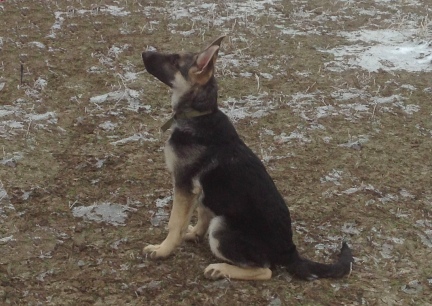
SIT:
To teach your dog to sit, yes even a new puppy, have a treat in your hand and hold it just above the dogs head as you say "ssssiiiiiiiiit" (all drawn out) and gently push your dogs butt to the floor. As soon as it happens (the dog sits) praise the dog verbally and give the treat.
DOWN:
In my opinion a dog needs to know the "Sit" and be consistent at it before starting your dog on the "Down".
This usually goes well and pretty fast if the dog has already learned to "Sit".
Put your dog into a "Sit" as you stand or kneel in front of the dog. Using a treat, moving it between the dogs front feet and pulling it forward as the dog moves to get the treat as you say the word "Dooooooowwwwwn" again, draw the word out.
Praise the dog, give the treat and have the dog do something else. In a few minutes repeat the "Down" command.
If you dog is not going down with just the treat, most will however, then you will need to do one or more of the following....
...Hold the dog's collar, under the dog's chin, and gently pull as you show the dog the treat.
...Gently push down on the dog's shoulders and encourage the dog to go down.
...Gently grasp the dogs front legs and pull forward to encourage the dog to go into the down. This might scare some dogs, be gentle and remember to calmly say "Dooooowwwwn".
Note: Dominate dogs will be harder to teach the "Down" the submissive dogs. If you have been working with your dog for a while and have mixed in trick training and are a fair and just trainer, even the most dominate dogs will be happy to learn yet another command that will please you and get them a treat.
HEEL:
You can start your dog on heeling with a buckle collar, gentle leader (dog halter) or training collar. If however you do not know how to use a training collar don't use them, they can really hurt a dog and do permanent damage. Most dogs can and do learn to heel with little correction. If you have treats and patients HEEL training will go well for you and your dog.
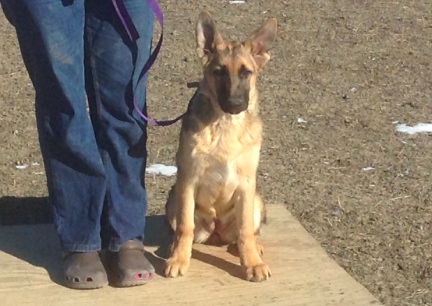
SIT AT HEEL:
Your dog will do better at this if it already knows how to "Sit" on command.
As soon as you start having your dog heel on command, walk at your heel (it's head parallel to your left leg) when you stop walking teach your dog to sit. Stopping with your left leg moving last (last step left leg) will also cue the dog.
The dog's sit should come straight away when you stop. The dog should sit straight.
Your dog will catch on to this so quickly. As you walk and your dog is at heel, first when training, slow down as a cue for the dog. Stop, as you stop say "Sit" and gently pull up on the collar and if needed gently push the dog's butt down. Make sure the dog is sitting straight (facing the same way you are).
The dog should sit each and every time you stop. You will not have to verbally tell the dog but a few times if you use the leash for a cue as you stop. When you stop move your hand with the leash in it upwards at first with a gentle pull to the dog, later just the cue will do it and soon, just your stopping will cue the dog.
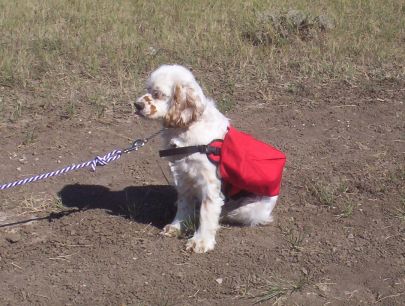
SIT STAY:
Do not start training the SIT STAY until the dog is consistent on sitting on command as well as sitting each and every time you stop as the dog is heeling.
After you stop while heeling. Step in front of and facing your dog. Make sure you step off with your right foot. As you take the step put your hand directly in front of the dogs nose and stay "Stay". Hold your leash above the dog and ready to make a correction if the dog moves. (most will not if you move correct)
Stand in front of your dog, but do not make eye contact, for a few seconds then step back next to the dog into the heeling position and praise the dog with both a treat and verbally.
Move back further and further on a leash (as above) then move one to "off leash" work with your dog.
This command comes in handy when you want a good photo too.
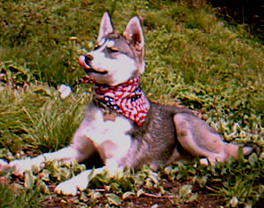
DOWN STAY:
Do not start the DOWN STAY until your dog is very consistent on the Down command. After your dog is obeying the "Down" Command and holding there (not really a stay, but does not jump back up as soon as it has laid down... proceed just as you did with the "Sit Stay".
COME WHEN CALLED:
Training the come will be done on leash. You will need your short leash and later a rope with a snap on the dog end that is about 25' long for best results.
Training for COME is taught after the dog is really sound (does it well) the Sit Stay.
Now mind you. *The* COME is different then coming to you when you call the dog out of the yard or to dinner or the like. This, the coming to call when it hears it's name, should be taught right away to a new dog or puppy.
To teach a dog to come to it's name to come when you whistle or to come when you say HERE, start right away with the dog as soon as you get it by having the dog on a leash and gently reeling it in giving it a treat as soon as it reaches you. Be sure to call the dogs name with a cue, such as the word "Here" or a whistle, or other key word, when you feed the dog. I use the word "Here" with my dogs when I want the near me when we walk, I am horseback riding and they are with us, or when we are out shed hunting. I use a whistle (the same whistle) for when I want them to come to me while on a walk (we live on 161 acres), to come into the house, to come and eat.
BACK UP
This is simple to teach but might take much repetition with some dogs.
The easiest was I know to teach this is to sit your dog in front of you, facing you. The best place to do this is against a hall wall so that the dog will be backing parallel to the wall.
Have the dog on leash and say "Back Up" as you take a small step toward the dog. As the dog moves you may need to help keep it's butt straight. At first just hold the leash just above the dogs head so that it can not move to the side, just backwards.
As soon as the dog moves even the smallest bit backwards, praise and reward. repeat this training for three or four times then work on something different, like a trick, then come back to back up training. Don't bore the dog with too many repetitions in on section.
Most dogs catch on the Back Up pretty quickly.
Now if you have taught your dog the Swing to Heel in basic obedience it may take a bit more to teach this command. You may need to put your foot out to the dogs side so that it can only move backwards, not jump to your side.
MOVE or EXCUSE ME
This is a command that every dog must know. It is so important for a house dog to move when told for not only the humans in the house safety, but also the dogs safety.
To train this command, wait til your dog is all comfy on the floor, now walk over, right toward the dog and tell it the command you are going to use. I use "Move" because usually I am in a hurry when this command is necessary and the work "Move" has a harder sounding to it so most dogs will obey quicker with this word.
As you walk toward the dog and give the command, only a deaf or stupid dog would just stay in the way of your feet. But if your dog does not move, gently, and I stress gently, touch your dogs side with your foot as you continue to walk toward the dog....not be ready. If you startle the dog, and you might the first couple of times, be ready to catch your balance.
When the dog moves praise the dog verbally. Repeat throughout the day but do not over do it.
The idea is to give the command as you approach the dog and the dog will step out of your way. This way if you are carrying something, or just so that the dog does not trip you, the dog will move and give you the right away. It is also just a good command to remind the dog who owns the house.
WHAT'S THAT? or GO SEE!
When I was in Jr. High School I had a friend that owned a lovely Irish Setter, smart dog, well trained dog, very hyper. But no matter what was going on in the home they could say to that dog "What's That?" and the dog would stop dead in it's tacks and listen with ears perked. I thought that was really KOOOOL.
How do you teach your dog to do that? Well, there are many ways. I have taught it like this...
Have someone stand outside your door and just after you ask the dog, "What's that?" speak in a half whisper and quick tone. Have the outdoor person scratch the door. If the dog does not "get it", have the outdoor person knock lightly. The dog should go to the door and bark. Have the person that is outdoors to move to windows and around to the side of the house at different times making noises for the dog to listen for. As the dog catches on make the noise less and less loud.
Usually that is all it takes for the dog to catch on quickly to this command. Practice it two or three times a day.
Reward the dog less and less with food and reward with verbal praise.
QUIET
First you need to teach the dog to "Speak". I know, sounds odd, but there is a reason. The dog will better understand what you are asking with "Quiet" if it understands when you ask that when you say "Speak" it is suppose to bark.
LEAVE IT
A great command for the dog that like to get into things inside and out.
When a dog is chasing a cat, getting in the trash, digging in the garden, or the like it needs to quit when it is told to. "Leave It" is just that command. It is taught pretty much the way on by is, but may need a gentle jerk to the collar, or what is called a POP on a chock collar.
When taught right on leash, the dog will carry over the behavior when off leash and from other rooms in the house or several yards out chasing or other misbehavior.
You will need to set the dog up to win or fail as you will. If you dog likes to get into your trash, put some meat into the trash and the dog on a leash and sit close to the trash hoping that in a few minutes the dog will forget it is on leash.
As the dog moves toward the misbehavior, pull the dog back and say. in a firm voice "Leave It". Praise the dog for moving away from the scene of the crime and find another behavior to break.
Perhaps barking at another dog on a walk, or chasing a cat, acting like a fool when the mailman comes, what ever your dogs "weakness" is, work on that.
This command is pretty easy for the things your dog doesn't care that much about. But if you have a hard core mailman hater, it's ganna take some work....and yes, it is worth it to continue to train.
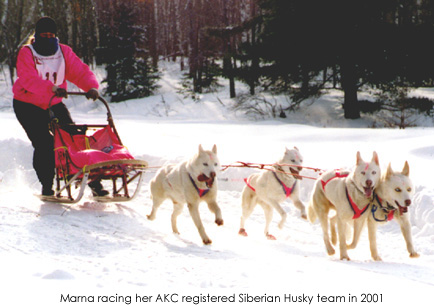
ON BY
This is actually a sled dog command. A wonderful command that means "keep going". Keep going and don't sniff the trash, don't look at that other dog, don't stop to pee, don't pick up that trash as you pass it, don't turn, don't stop, just keep going "On By".
On By needs to be taught on leash and distractions need to be added as your dog learns this command.
Take your dog out for a walk and set it up. Pass things your dog will want to pee on, to sniff, to bark at. Walk the dog in either a heel or just for a walk, when the dog stops, or turns or starts to do anything other then continue to walk forward, give the dog a gentle tug and say "On By" in a commanding voice. Go a few feet, turn around and walk by the same distraction again.
Like heeling, most dogs catch on to this command rather quickly....and it may save their life.
BACK OFF or ENOUGH
Ever go to visit someone and their dog went nuts at the door when you came. The owners reassured you that the dog is/was friendly and to come on in. You go in and the dog is growling, and watching and ruining the visit?
Many people want the visitor to pet and make a fuss over such an unruly dog. Or give it a treat. You know what that does? Encourages the dog to treat each and every visitor that way. And who wants to take a chance on a dog that acts this way...life is too short and bites hurt.
It is not funny, cute or exceptable when your dog does this. Your dog needs to be taught to BACK OFF or ENOUGH. When you say these words it needs to be over and the dog needs to go lay down or into another room.
If your dog is a puppy and if the behavior begins, stop it right away. Tell the dog to either BACK OFF or ENOUGH and put the dog into a down stay across the room. For an older dog you may need a leash on the dog. (read "Leave It" above for more hints for training).
Mix in a little fun while training your dog Basic Obedience. Train a few tricks to your dog once he starts learning. Dogs love to please their owners and see them smile, doing tricks will make you both happy.
There is much more I could write on this page about training dogs. Training your dog, or keeping your dog on it's toes with the training you have in your dog, is non ending. All of the dog's life it should be expected to act in a way that is exceptable. Your dog should be polite around other people and other dogs. I will recommend strongly that you buy a book on Dog Training and have a little fun training your dog.
I would like to invite you to join us on a Yahoo Group that I host called Working Big Dogs. | 



 In the high plains of South Dakota, USA
In the high plains of South Dakota, USA In the high plains of South Dakota, USA
In the high plains of South Dakota, USA